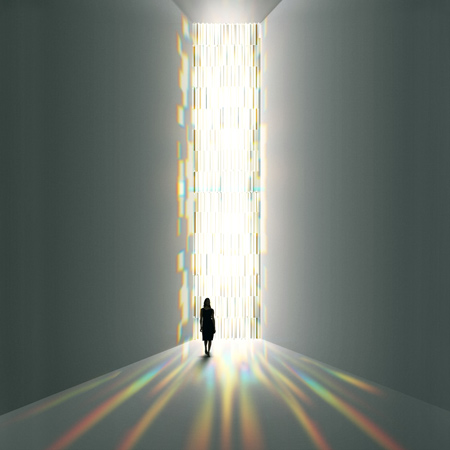
Tokujin Yoshioka is featured in Dwell Magazines Q&A section of the March 2011 issue.
See article below:
Two Million plastic drinking straws fill an exhibition space like haystacks of spun silk; a chair is "grown" from crystals in a transparent tank-Tokujin Yoshioka's work is characterized by a nod to the ethereal. After learning the trade from legendary industrial designer Shiro Kuramata and fashion icon Issey Miyake, the softspoken Japanese designer established his own studio in 2000. From products with Moroso and Swarovski, to retail spaces for Camper, to challenging architectural projects, Yoshioka's emphasis on the experience of design allows his "experiments" to truly transcend corporeal limitations.
Why design? I liked drawing when I was a little boy. When I was six years old, my father told me that there is an occupation called "designer," and I made up my mind to become one.
What is your process? I always ask myself objective questions: Is this idea worth creating? Will the result make people happy?
Is there a piece that typifies your approach? I still remember the day I presented Honey-Pop at Salone Internazionale del Mobile in Milan in 2002. As people saw a layered paper opening up and turning into a chair, a cheer arose in the space. At that moment I realized that I could communicate with people all over the globe through my design.

Does the world feel like it's getting smaller or larger? Today cities are so closely connected. I believe this has led-and will continue to lead-us to respect and enjoy the characteristics of each region, rather than blending them together. The uniqueness of cultures will always be stimulating the world of design.
How has your work evolved? On every project, I try to create something that has never existed, something that could amaze people. Each time I have designed something that excites me the most.
Where is your favorite place to design? I prefer to work where I can experiment. During the past 20 years in Tokyp, I have formed relationships with great researchers and technologists, which have been important for me to create new ideas that reverse common sense.
If you could design anything at all, what would it be? When I visited Henri Matisse's Chapel of the Rosary I had a striking inspiration, a part of which I presented at my solo exhibition, Tokujin Yoshioka SPECTRUM, in Seoul, Korea, in May 2010. Rainbow Church is a nine-meter high stained-glass structure made with 500 crystal prisms. I would like to build an entire church that further expresses this contrast of historic and futuristic beauty, making us feel the light using all our senses.

How has design developed since you began working? We are at a moment of significant change today, a shift from creating shapes and constructing sensations. The challenge is the pursuit of these new experiences, like a television in the future that can send us scent through the screen.
Can you characterize Japanese design? People generally say Japanese aesthetics are poetic, yet I do not think we can define it like that. Cultures grow, change, and evolve like living creatures; they cannot be defined, which is what makes them beautiful.

No comments:
Post a Comment